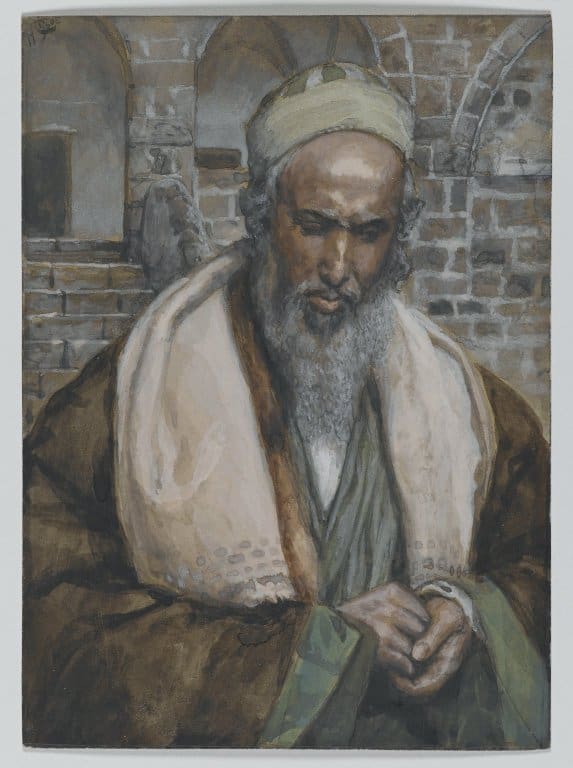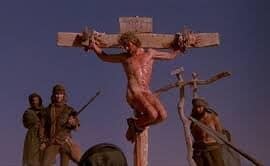Most of my readers know that the anonymous author of the writing we refer to as the “Gospel of Luke,” in fact, wrote a second volume to his work–known to us today as the “Acts of the Apostles.”
The author refers to himself in the first person in the opening of both parts of this two- volume writing (Luke 1:1-4; Acts 1:1), as well as inserting a first person narrative, sometimes called the “We Source,” in three places: Acts 16:10-18; 20:4-21:19; and 27:1-28:30. Scholars are divided as to whether these first person references originate from the author himself–or are pulled in from a travel narrative available to him. It would seem obvious that whoever wrote this work intended the reader to believe the former, so that the author is presenting himself and present and traveling with Paul.
Traditionally, this author has been identified as Luke, a “fellow worker” of Paul, named in Paul’s short little letter to Philemon (v.24)–and in two other letters attributed to Paul, the first of which further identifies him as “the beloved physician” (Colossians 4:14; 2 Timothy 4:11). Whether such be the case, depends on the weight one gives to later tradition that assigned Paul’s companion Luke as the author. We know nothing else about him, nor of the patron, Theophilus, who apparently commissioned him to write the work. He does not claim to be a first generation “eye witness,” as he makes clear in his Prologue in Luke, and he says he is writing after many others had also composed their gospels.
A related, but even more thorny issue, is the academic debate over the dating of this composite New Testament writing, Luke-Acts. Joseph Tyson has an exceptionally clear and balanced presentation of the various arguments for an early (early 60s CE in Paul’s lifetime), intermediate (80-90 CE) and a late date (110-120), in his article archived at Bible & Interpretations, see “When and Why Was the Acts of the Apostles Written?” You won’t want to miss this one.
What makes Tyson’s stand out in my view is that he does not focus on the usual concern that an early date is “conservative” position and thus supports the authenticity or accuracy of the work, whereas a “late” date is a “liberal” view, favored by those who put little historical stock in the account of the author, either of the Gospel of or the writing we call Acts of the Apostles. Tyson shows that this issue should not be central. Rather we should be interested more in the historical context that the author appears to address. A convincing case can be made that the rise and development of the teaching of Marcion, often ignored by students of the New Testament, provides a meaningful historical context to which the author of Luke-Acts most likely responds.
The influence of the “Acts of the Apostles” in shaping what became the “Master Narrative” of early Christianity can hardly be overestimated. Keep in mind, that title is editorial–it was not a name given by the author himself. It is quite a misnomer since once Paul comes on the scene in Acts 9, hardly anything is said about the other apostles as all–other than a couple of stories about Peter–in support of Paul’s mission to the Gentiles–and three passing references to James. A more fitting name for volume two of this work might be “The Acts of the Apostle Paul”–with a brief introduction to bring him on the scene.

Of course Acts was only the beginning, as Robert Wilken has so ably shown in his classic work, The Myth of Christian Beginnings. If you have never read this important and influential work I highly recommend it. It will transform your understanding of earliest Christianity and how it unfolded. The anonymous author of Luke-Acts lays out a specific unfolding narrative of “Christian Beginnings” and sets it in concrete for all time. It is not just “a story” but basically became the Story. There are no competing narratives or alternative versions other than what he offers us. Acts provides a kind of template for how the Jesus movement developed “after the cross,” so to speak.
It was picked up and further propogated by our earliest “Church Historian,” Eusebius of Caesarea, in his Church History in the early 4th century CE. You can find versions of Eusebius’s work on-line, and the expensive Loeb Classical Library includes a two volume set with the Greek text facing the English. However these translations and editions are woefully out of date. Fortunately, my former colleague at UNC Charlotte, Jeremy M. Schott, has published a new, reasonably priced, translation with notes with UC Berkeley press, Eusebius of Caesarea: The History of the Church. I highly recommend this volume. Reading Eusebius in a good modern translation with notes makes it almost a page turner!
So the book of Acts continues to fundamentally shape nearly all we think about everything “early Christian.” Try imagining “Christian Origins” of the first four decades of the first century (30-70 CE) without the basic story outline of the book of Acts in your head and you will see what I mean. Dom Crossan rightly calls this period the “dark age” of earliest Christianity. I love, in particular, the way Paula Fredriksen phrases things with the title of her latest book: When Christians Were Jews. Brilliant!
Another way of putting things is to ask what was the Jesus movement like before Paul and separate from Paul. I try to do a bit of this in my book, Paul and Jesus, by suggesting that we need to “Read the New Testament Backwards.” In other words we can’t start with the gospels! The difference it makes is enormous.
When people think about what happened “after the cross,” more than anything else they have the narrative of the book of Acts in their head. The role of James, the brother of Jesus, is muted. Peter and John become the leading apostles. Paul soon takes over and dominates the story (chapters 9-24 are almost exclusively about Paul). Even the speeches of Peter in the early chapters of Acts are recast in Pauline garb–the so-called kerygma of the early Church. I remember being so impressed years ago, as a young college student, with C. H. Dodd’s little volume, The Apostolic Preaching and its Development. It was a few years later that I had all my assumptions challenged by Henry J. Cadbury’s The Making of Luke-Acts, as I realized the author of Acts was simply reflecting common Hellenistic literary conventions in both his narratives and his speech composition, as well as the so-called “We Source” (Acts 16:10–17; 20:5–15; 21:1–18; 27:1– 2). Acts, to be sure, relies on earlier sources, especially the speech attributed to Stephen in Acts 7 that is so closely parallel to Ebionite sources, including so-called “Ascents of James” embedded in the Clementine Recognitions. Nonetheless, as Arthur Droge has so convincingly demonstrated, the world of Acts is the world of the first decades of the 2nd century CE. It is likely written long after 70 CE when any possibility of recovering what the early Jerusalem “Church” (or should I say “Synagogue”) was like–or what any of the original followers–or women like Mary Magdalene or Mary Jesus’s mother, might have contributed to the movement. [1]See “Did “Luke” Write Anonymously? Lingering at the Threshold,” in Die Apostelgeschichte im Kontext antiker und frühchristlicher Historiographie, eds., Jörg Frey, Clare K. … Continue reading









Comments are closed.